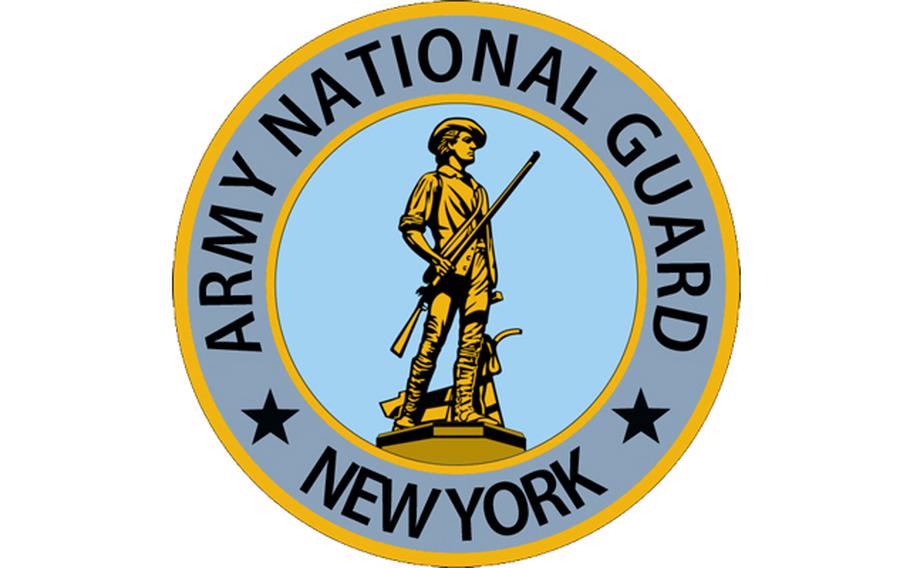(Tribune News Service) — During the Civil War, abolitionist Frederick Douglass spoke about the effect that the enlistment of Black soldiers into the Union Army had on his people.
“Once let the Black man get upon his person the brass letters, U.S., let him get an eagle on his button, and a musket on his shoulder and bullets in his pocket, there is no power on earth that can deny that he has earned the right to citizenship.”
By the end of war, roughly 179,000 Black men had joined the Union Army and another 19,000 served in the Navy.
From Central New York, men joined the 20th and 26th United States Colored Troops and the famous 54th Massachusetts Regiment.
When the war ended, those patriotic feelings remained. With the approach of the 1876 centennial, some Syracuse Black veterans hoped to create their own battalion with dreams of joining the New York State National Guard.
The Onondaga Colored Battalion would be made up of 100 men and were, according to retired Auburn history teacher and author of the book, “Black Soldiers of New York State: A Proud Legacy,” Anthony Gero, “professionally trained and highly motivated.”
They are also largely forgotten today.
Denied the opportunity to serve their home state because of the color of their skin, the battalion faded away after only two years.
“The history of the Onondaga Colored Battalion should not be relegated to the dustbins of our local history,” Gero said.
The men of the Onondaga Colored Battalion were introduced to Syracuse in an article in the Feb. 2, 1876, edition of the Syracuse Daily Courier.
At a time when many local newspapers were condescending or downright racist toward Black people, this article was extremely positive.
After arguing that Black soldiers had acquitted themselves well during the “late unpleasantness,” the Civil War, the newspaper’s reporter wrote that it was “therefore not unbecoming our colored citizens to form themselves into a military organization, and so perfect themselves in the manual of arms, as shall be creditable alike to themselves and the city of their adoption.”
“All hail the Onondaga Colored Battalion! Let our other military organizations look to their laurels.”
John Valentine, William Cooper and George Rose were the originators of the organization when it had formed the previous autumn. They met for weekly meetings and drill at the Black Methodist Church on Chestnut Street in Syracuse’s Ninth Ward.
Men ranged in age from 20 to 35 and were “from among the best business precincts of our city,” the Daily Courier reported.
An initiation fee of $1 was charged to each recruit and a “tax” of 10 cents was required each week to meet expenses which included gray uniforms with white belts and eventually Springfield rifles.
Company officers were Black. William Jackson, for example, a waiter at the Vanderbilt Hotel, was made a captain.
Their commanding officer, Col. George Berryman, was white.
He was a captain in the 81st New York Volunteers from Oswego during the Civil War before moving to Syracuse in 1874 and becoming a foreman at the National Cigar Company.
“He is a thorough disciplinarian, and there is no question but under his knowledge as a skilled officer, the Onondaga Colored Battalion will long rank with the best military organizations of the state,” the Daily Courier said.
The new military unit made an early impression.
“The colored citizens of Syracuse feel quite proud over their new military organization,” The Evening Telegram in New York City reported.
“There are now enrolled in the battalion nearly 100 of our worthiest young colored men,” the Syracuse Journal wrote on Oct. 2, 1976, “who are becoming quite proficient in the manual of arms.”
Their earliest meetings were attended by Gen. Gustavus Sniper, a local Civil War hero, whose statue on horseback stands on Syracuse’s Northside.
Sniper was then a New York National Guard officer and for him to make an appearance indicates the battalion had larger aspirations.
“His relationship to the battalion is important and lends credence to the hope that, at that time, this independent battalion would be accepted in the Empire State’s armed forces,” Gero said.
On Aug. 25, 1877, the battalion took part in a “sham” battle, reenacting the fighting around Peterburg, Va., in 1864. It participated alongside white soldiers of New York National Guard units.
“The fact that the colored battalion actively participated in this sham battle shows that the battalion was anticipating acceptance into the Empire State’s armed forces,” Gero added. “The cooperation between the black and white military units in Syracuse is quite significant on this point.”
But the invitation would never come.
Neighboring states like Connecticut, Pennsylvania, Massachusetts and Ohio had segregated Black units in their National Guards’ ranks from the end of the Civil War. Even Southern states like Virginia, Georgia and Texas did.
But not New York state.
This lack of acceptance diminished enthusiasm in the battalion.
On Dec. 17, 1877, the Syracuse Journal reported that men were still drilling on Chestnut Street but noted that interest in the unit was “lagging.”
From that point on, mentions of the battalion disappear in local newspapers.
Col. Berryman moved on to Chicago, Ill. Some of the men may have a formed a drill company called the Palmer Guards.
“The fact that this military and civil rights experiment did not result in the acceptance of the Onondaga Colored Battalion into the National Guard is a sad tale in New York state’s long military legacy,” Gero said.
It would not be until 1913, with the “authorization, formation, and recruitment” of the 15th Regiment, when Black New Yorkers would have the opportunity to serve their state.
©2024 Advance Local Media LLC.
Visit syracuse.com.
Distributed by Tribune Content Agency, LLC.

(New York National Guard)